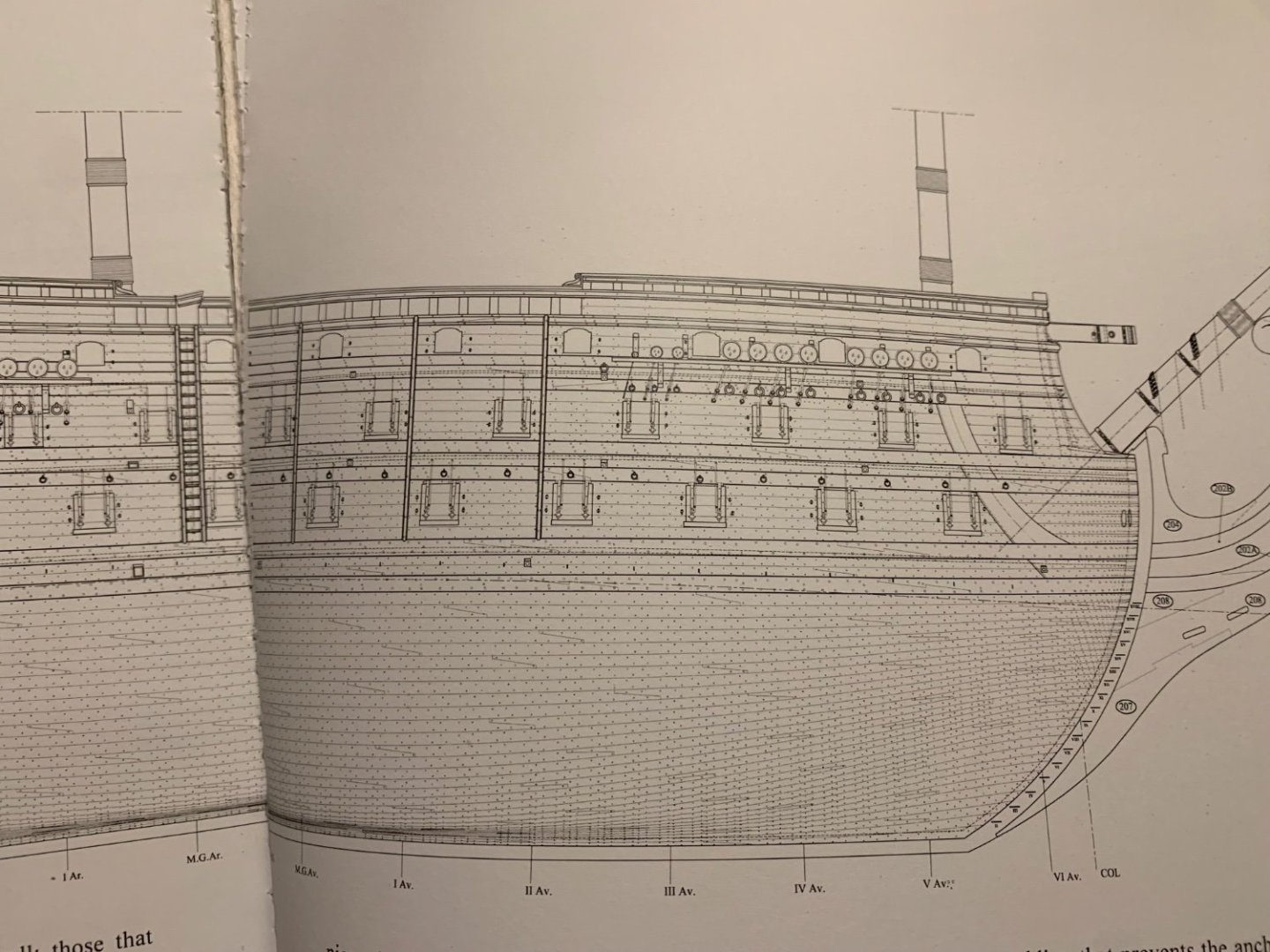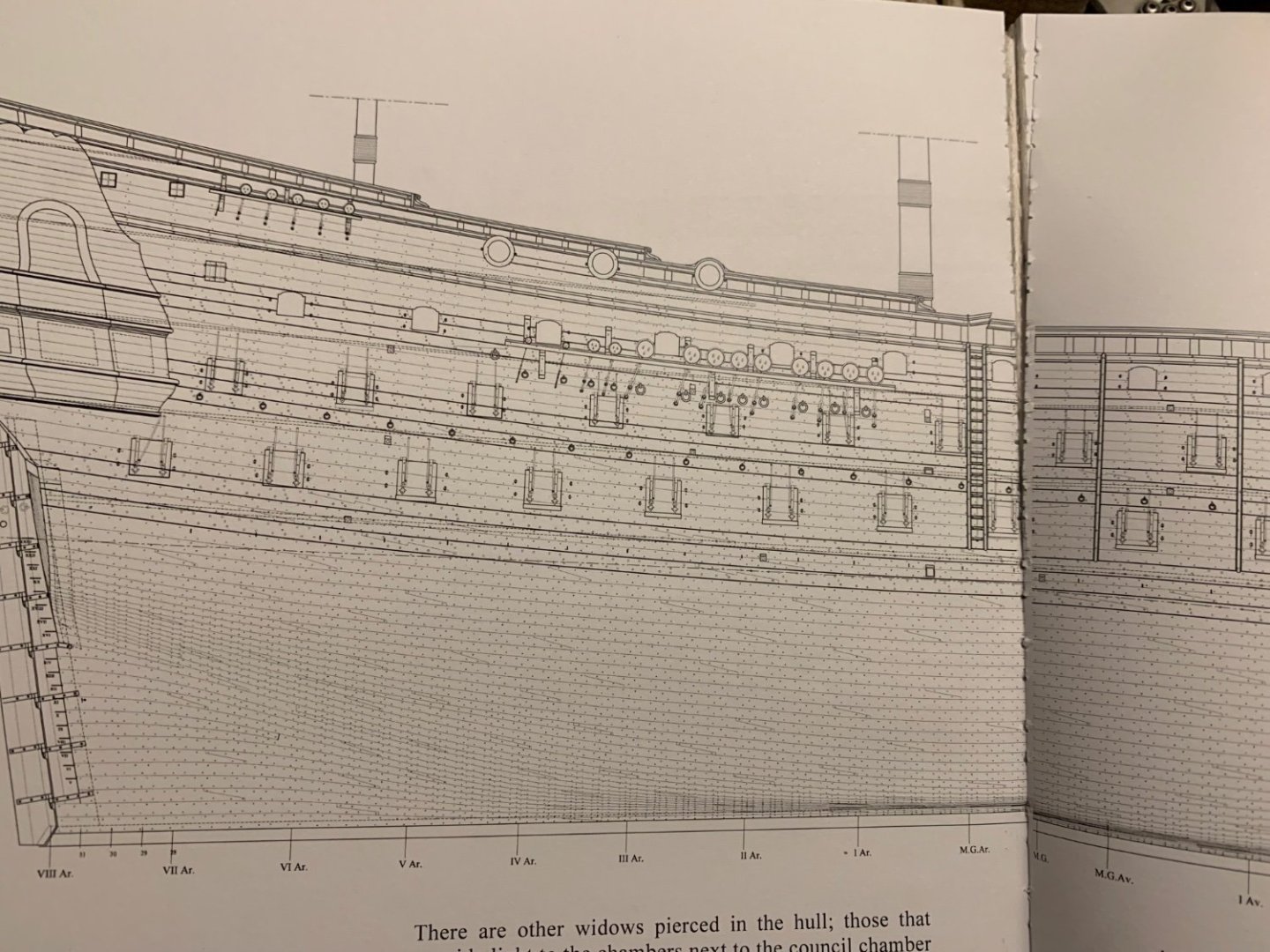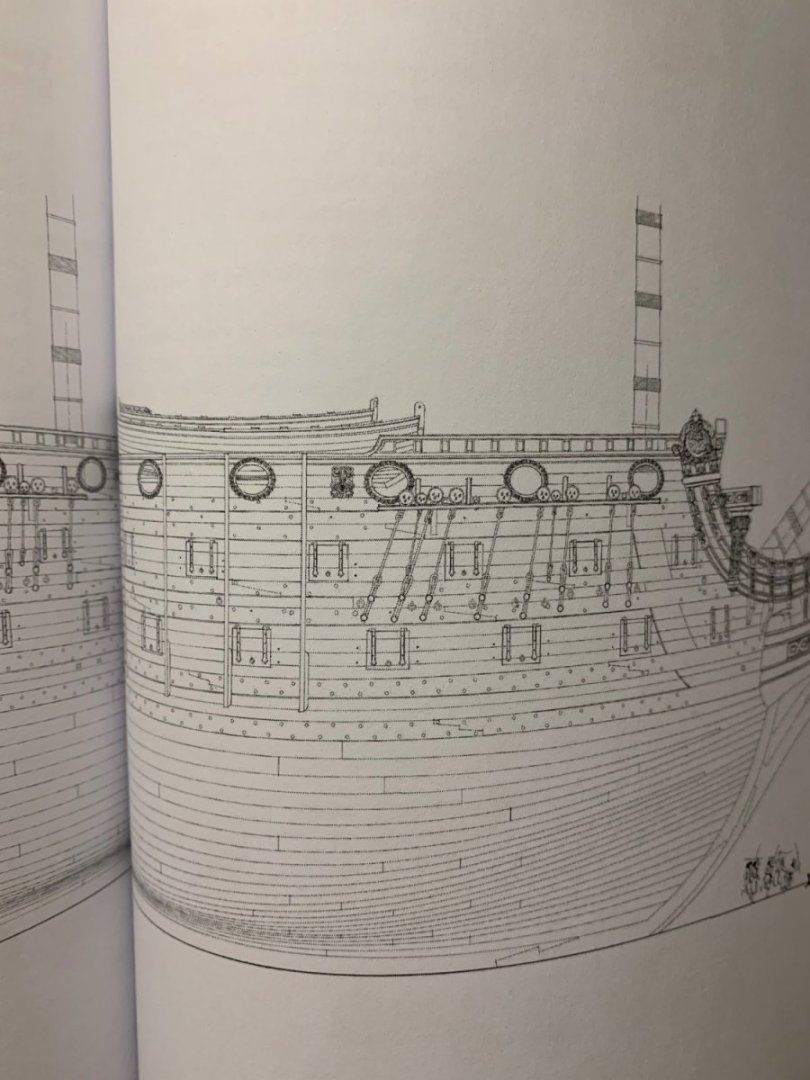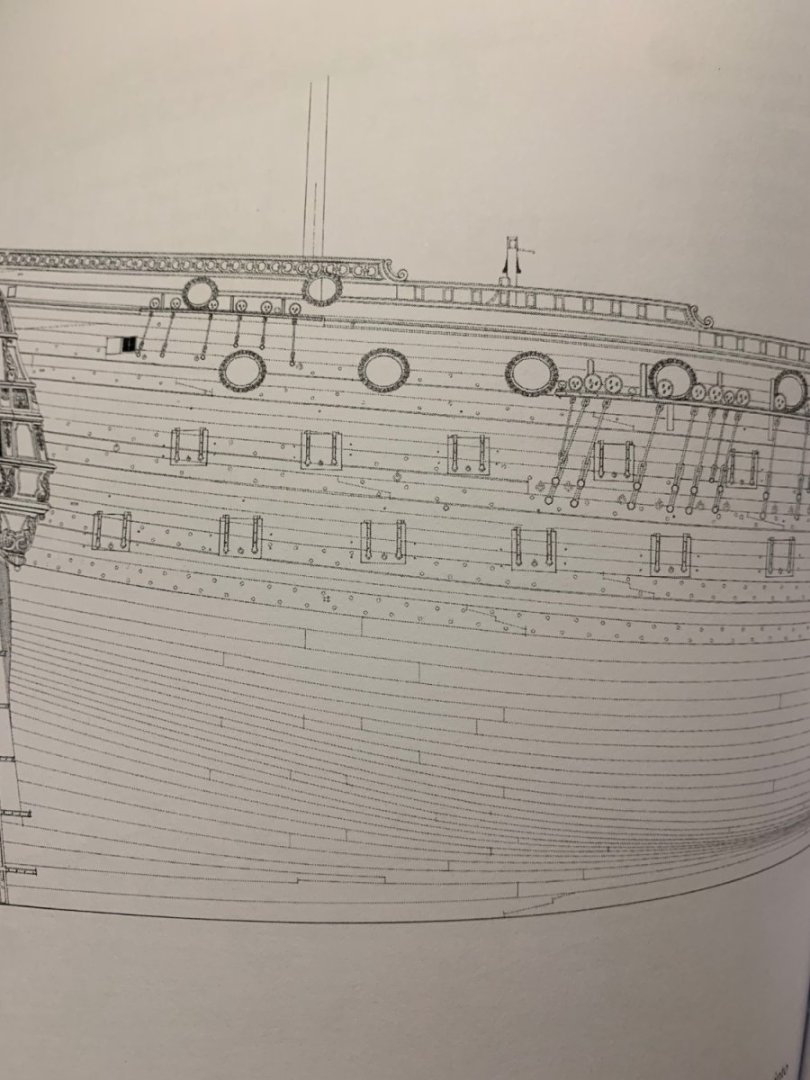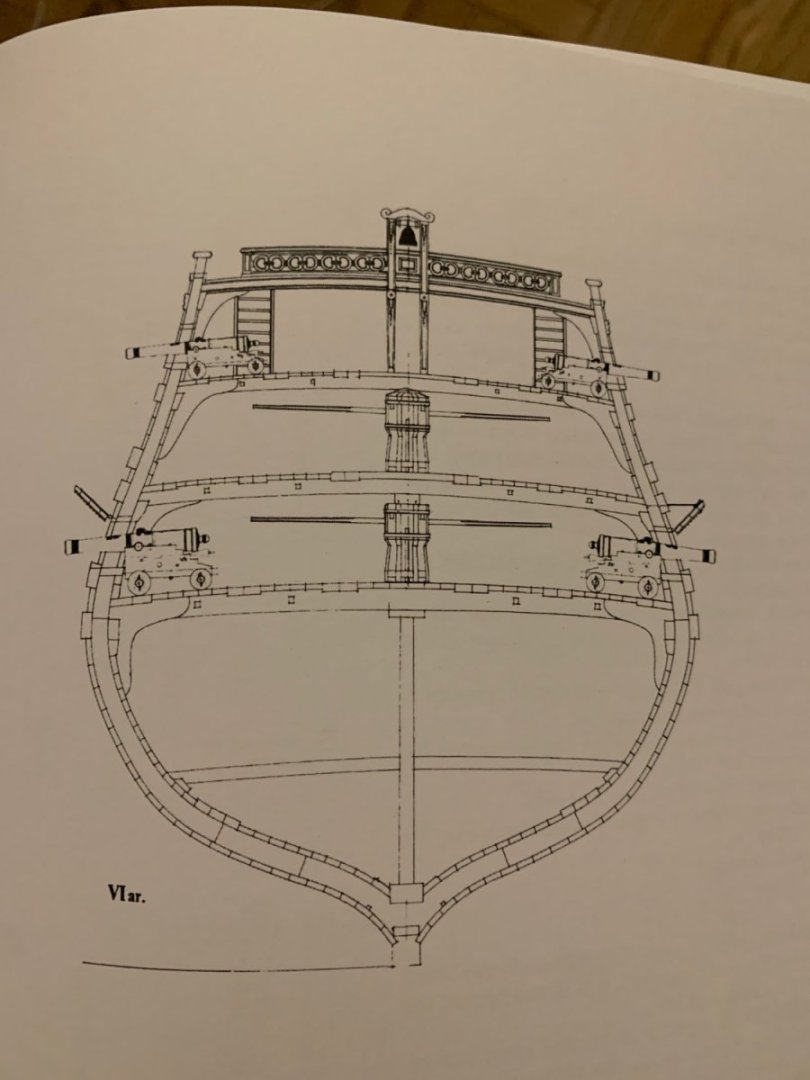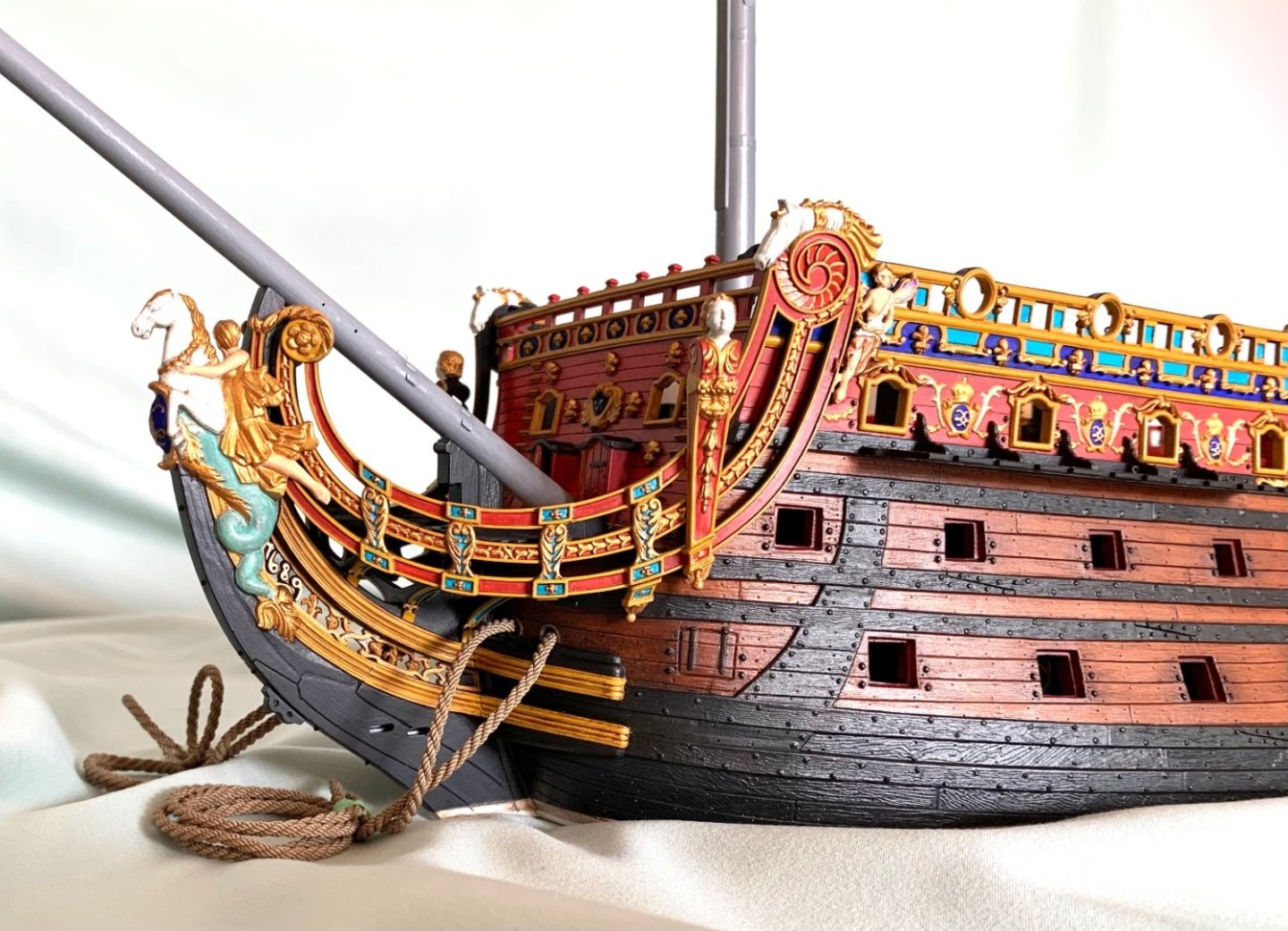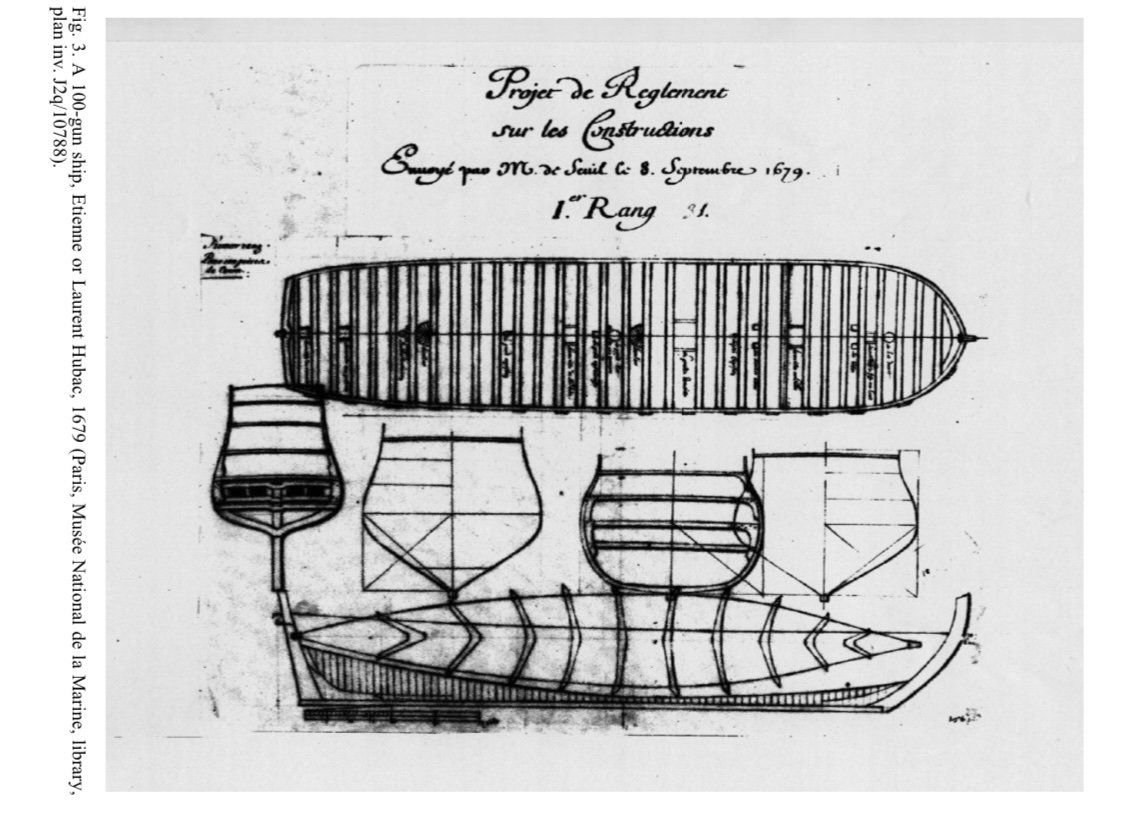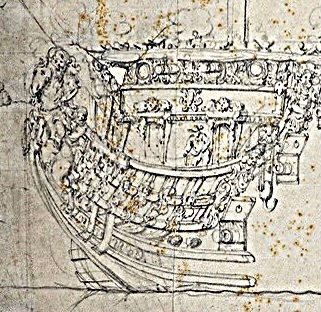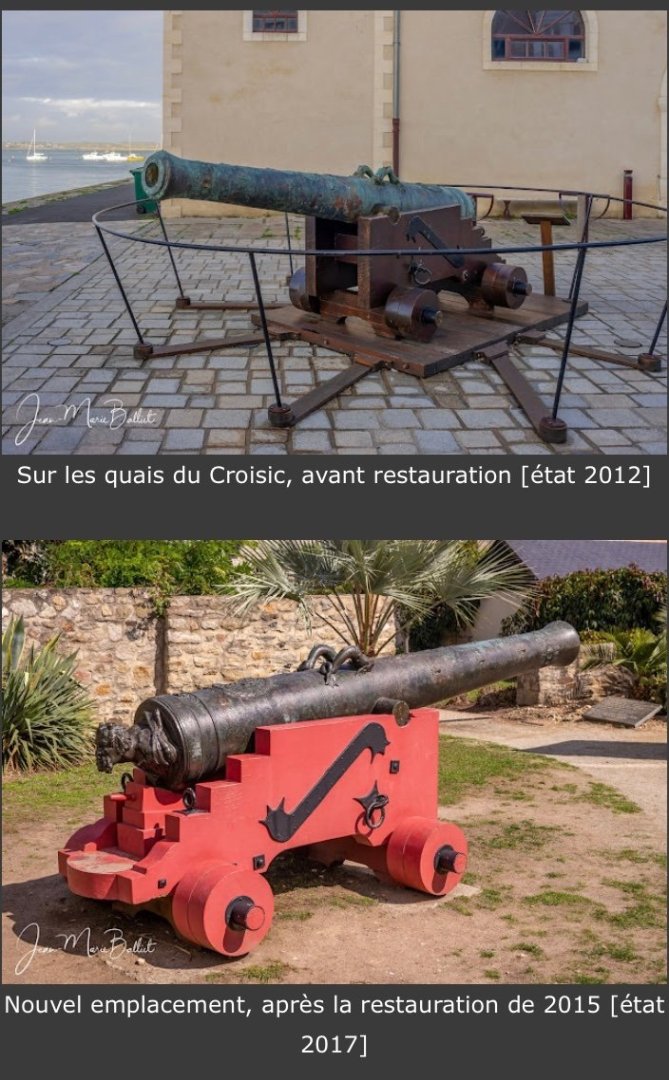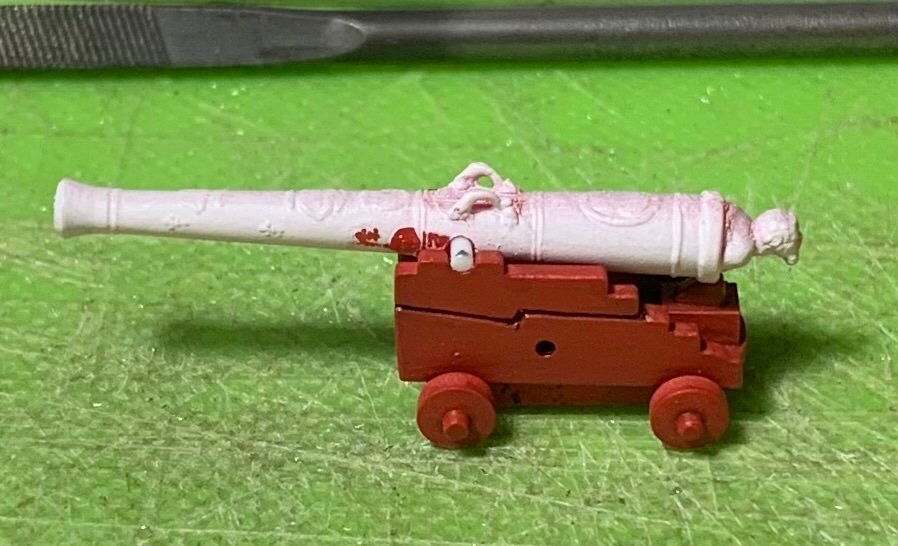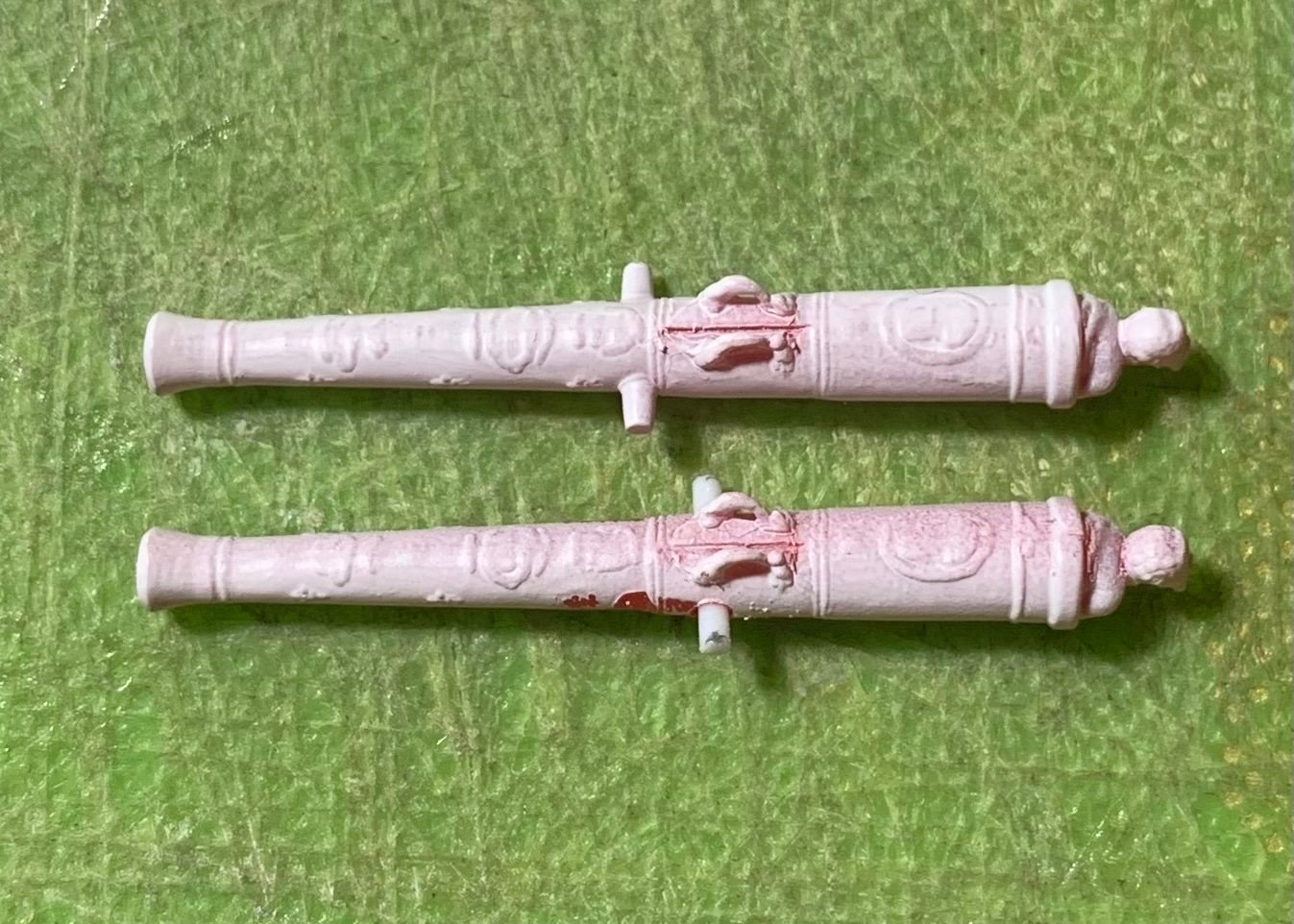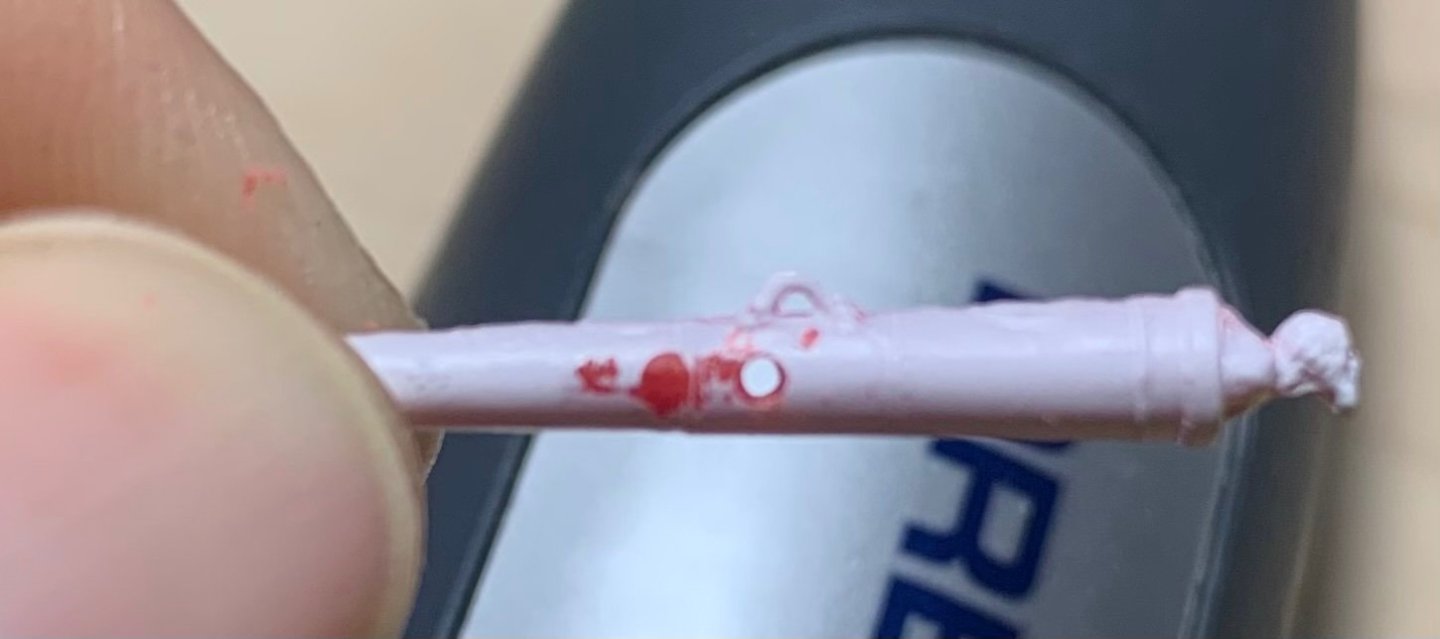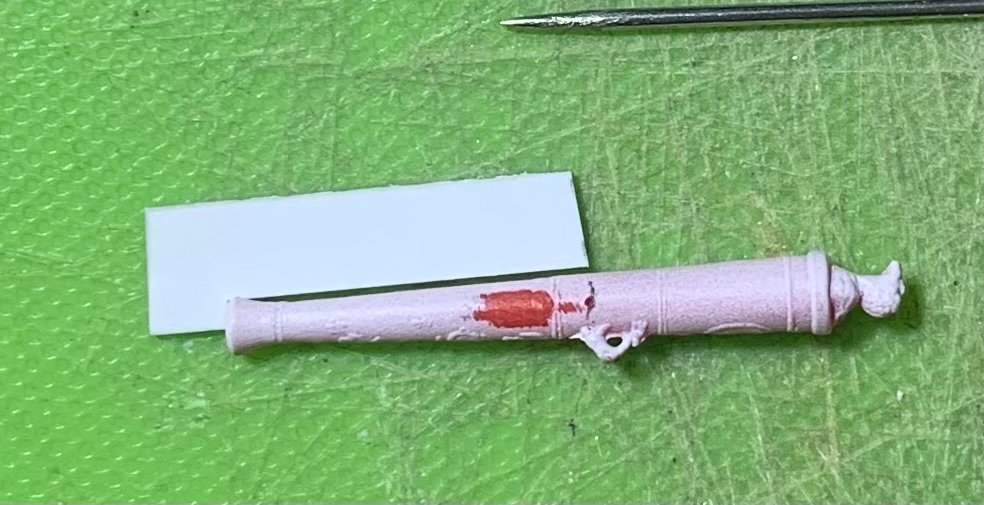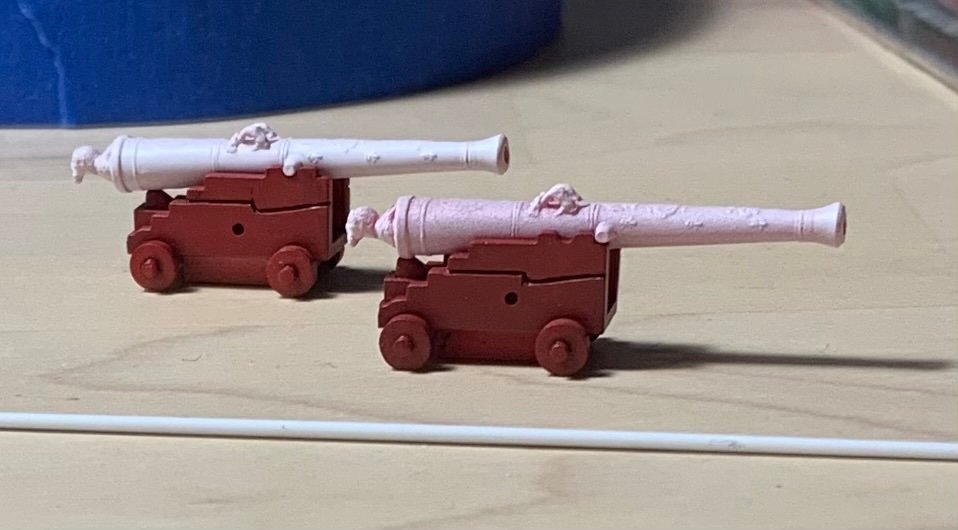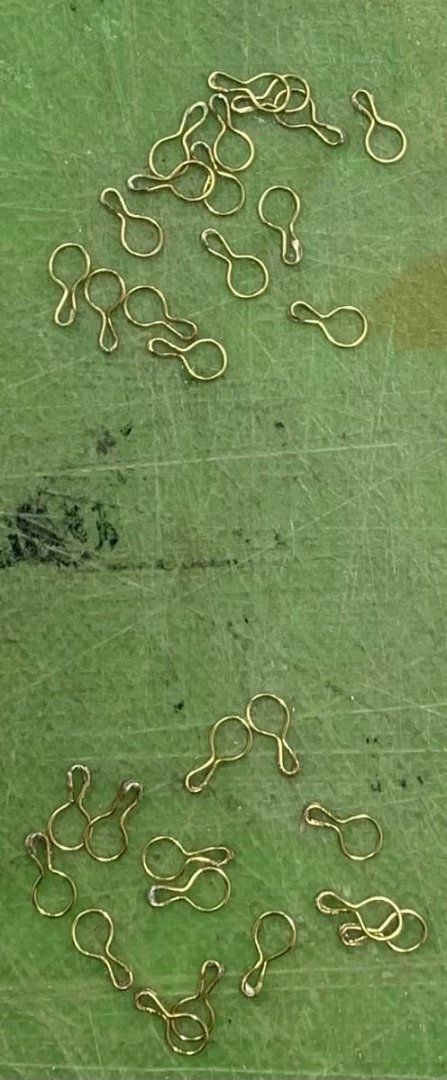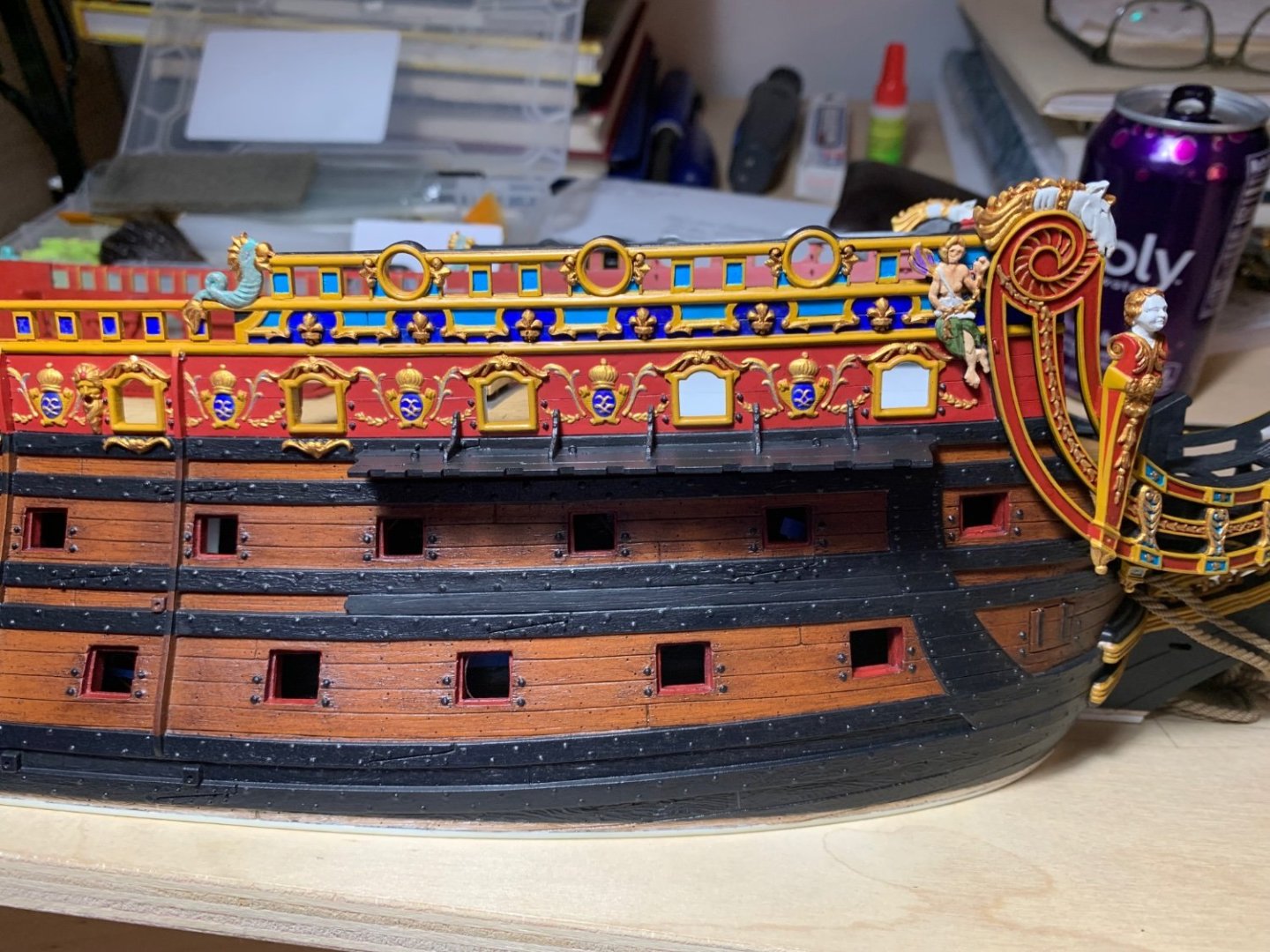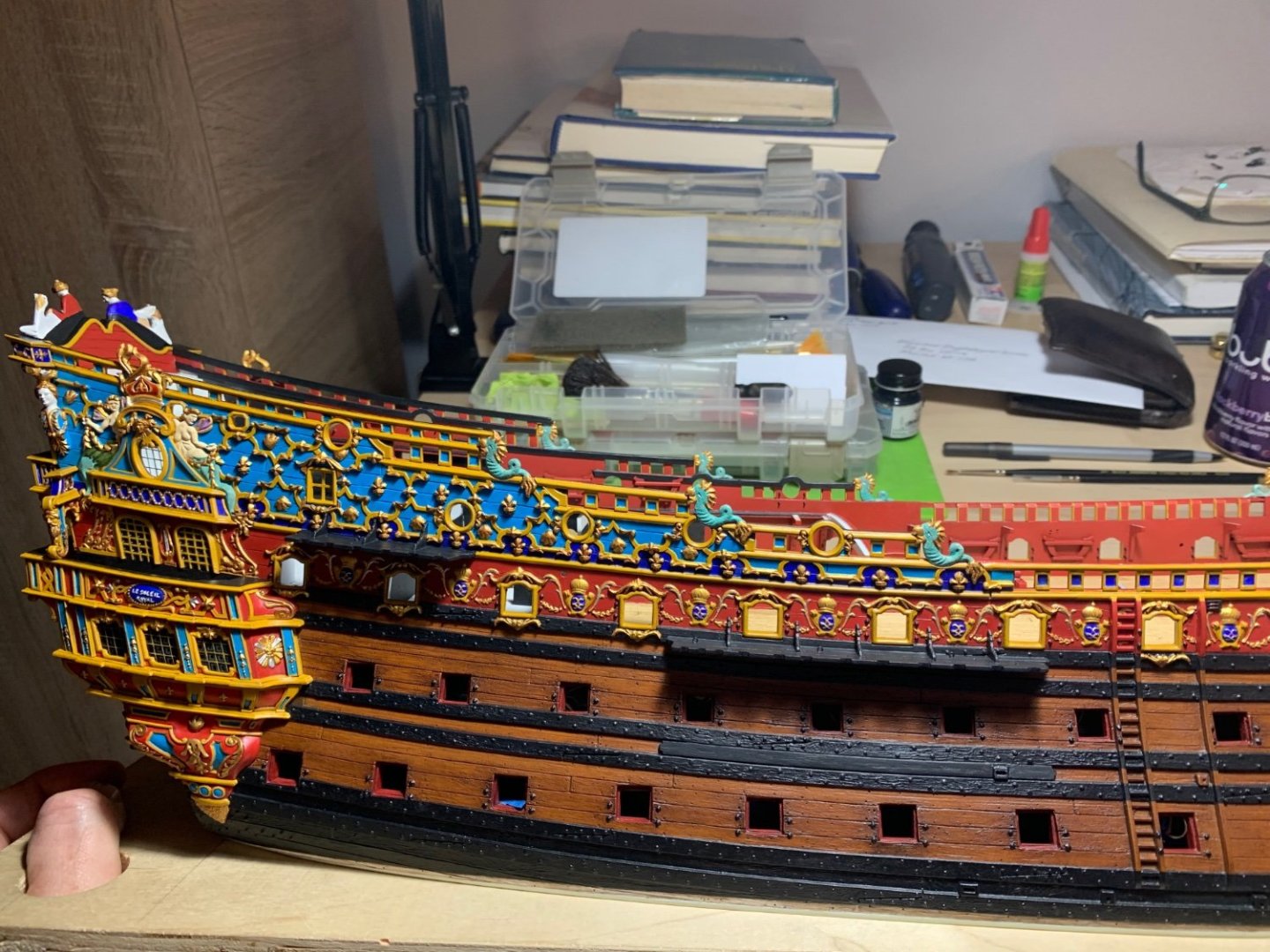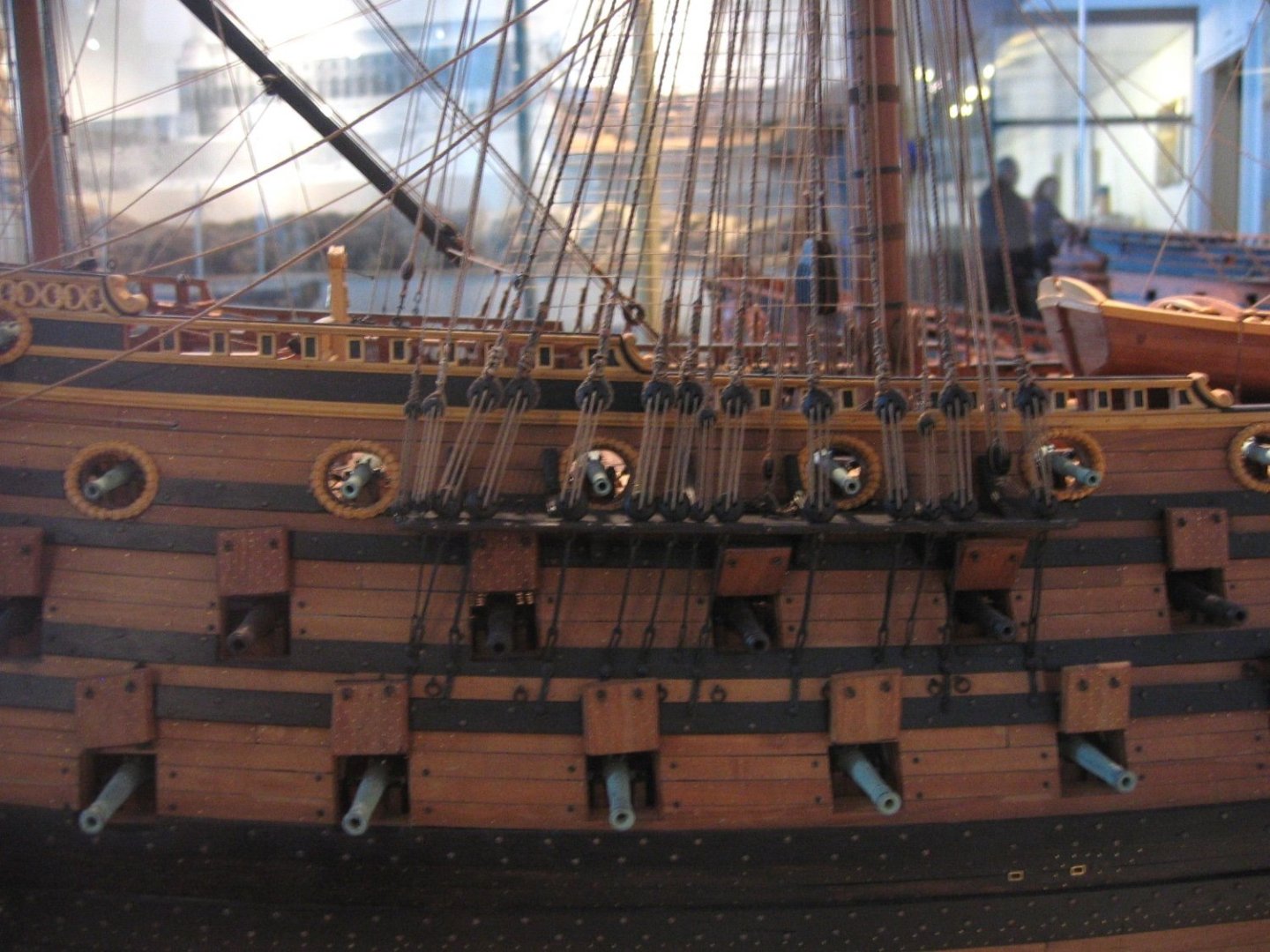-
Posts
3,310 -
Joined
-
Last visited
Content Type
Profiles
Forums
Gallery
Events
Everything posted by Hubac's Historian
-
For carving the split-tail tritons out of wood, my inclination would be to carve from the thighs, on up, first, while leaving the twisted lower legs oversized and for last. Before carving them, I’d make a backing piece that the carving fits into, and temporarily fix it in-place with a glue that could be dissolved in alcohol later. This support block should have a long enough handle, or extension, so that it can be clamped in a vice for working the fine details. You have done really beautiful work! I’m enjoying the build very much.
-
Thanks for the reference, Eric! This is all shaping up very nicely.
- 429 replies
-
- soleil royal
- Heller
-
(and 1 more)
Tagged with:
-
Eric, can you please remind me where you purchased these rivets from? They look like the ideal fastener for my chain preventer plate links.
- 429 replies
-
- soleil royal
- Heller
-
(and 1 more)
Tagged with:
-
Ian, we are here for that when you do start your SR. You know you want to 🙃
- 1,508 replies
-
- Le Soleil Royal
- Heller
-
(and 1 more)
Tagged with:
-
I agree with Henry, at a maximum, and would veer toward one plank width or slightly less. The Heller model is a very tall superstructure.
- 1,508 replies
-
- Le Soleil Royal
- Heller
-
(and 1 more)
Tagged with:
-
You are very right about that Bill. It is a task that I know how to go about with some efficiency and guaranteed clean results, and that is comforting. ‘Especially so because I have spent quite a lot of the past five months in a state of observation and contemplation over how, exactly, to tackle the more difficult and unfamiliar aspects of the build. Apart from the deadeye strops, I really wasn’t happy with any of my other link-making for the chains. Finally, I remembered that Andre Kudin has produced an extremely detailed YouTube log that accompanies his MSW build of Le Fleuron. Granted, he is working in 1:48, and with a substantially heavier gauge of wire, but his chains have no kinks or tell-tale deficiencies of technique, so I searched through his videos to see exactly what he does. I’ll do a more detailed post on this later, but Andre has absorbed the lessons of the great contemporary Russian masters, and he has quite a lot of original ingenuity that he demonstrates so clearly in his videos. Suffice it to say, for now, that Andre gave me confidence to pick up with that project again and know that I can achieve similarly excellent results. His videos really are superb and you can turn-on English captions to understand what he’s saying and appreciate his humor. Although I wish I were more active with the actual building of the model, I console myself with the understanding that this mental incubation period is useful and necessary to become a better modeler that isn’t intimidated by metal work or rigging. We all get where we’re going eventually.
- 2,699 replies
-
- heller
- soleil royal
-
(and 9 more)
Tagged with:
-
Gary, congratulations on finding a home filled with eager and inquisitive eyes for the Underwood. Work of your standard and attention to detail is precisely the sort that might inspire someone to give the hobby a try. I love the elegant lines of these workman boats that you build. The Pelican is shaping up beautifully.
-
Truly lovely Eberhard, a thing come to life. This is exquisite work in such a small scale!
-
Well, Micheal D. (72Nova) did an excellent job of setting his full-hull SR into a seaway. He showed me a few pictures, at one point, and as I recall, the case base was made deeper to accept the depth of the hull below the waterline. I can’t remember what his approach was to making the water, but it really looked great.
- 1,508 replies
-
- Le Soleil Royal
- Heller
-
(and 1 more)
Tagged with:
-
I thought it might interest you to take a look at the brilliant Andre Kudin’s video series for his Fleuron, 1729. In this installment he is making the lid lanyard grommets. His process for doing this on a wooden model isn’t as important as what the finished grommet looks like. Granted, there is a good 50+ years between Fleuron and SR, but there is some insight to be gleaned. You can turn on English subtitles in his videos to understand what he is saying. Andre is an extremely resourceful modeler, and his Fleuron is a true gem of the craft:
- 429 replies
-
- soleil royal
- Heller
-
(and 1 more)
Tagged with:
-
Skids look awesome, Eric! That’s a whole lotta’ drilling, but it will be worth the effort in the end.
- 429 replies
-
- soleil royal
- Heller
-
(and 1 more)
Tagged with:
-
Boudriot and Lemineur are the period authorities on the matter, so I would trust that they have read the fine print on these small details.
- 429 replies
-
- soleil royal
- Heller
-
(and 1 more)
Tagged with:
-
Hi Eric, The St. Philippe monograph shows an equidistant transition that crosses the wale and pierces it around mid-ships: The L’Ambiteaux monograph essentially shows the same thing. A cross-section, where the lanyard passes through the wale: In the broadside, the lanyards themselves are omitted, but the holes are present: Sorry for the poor photo quality.
- 429 replies
-
- soleil royal
- Heller
-
(and 1 more)
Tagged with:
-
Again, a big improvement in scale, Eric. I’ll get back to you a little later this evening on the lanyard holes.
- 429 replies
-
- soleil royal
- Heller
-
(and 1 more)
Tagged with:
-
Yes, this is a major improvement over your first attempt. Time well-spent!
- 429 replies
-
- soleil royal
- Heller
-
(and 1 more)
Tagged with:
-
For the sake of clarification, Etienne makes a series of 16 faint hash marks locating the ports on the starboard side of the drawing. Given the date of the drawing, I have always taken this as reasonably credible evidence that SR1 (1670) was originally pierced for 16 ports. After all, if the Hubac’s had decided, after La Reyne (1668) that a first-rate could not reasonably be pierced for 16, then why would they still be proposing it in 1679?
- 429 replies
-
- soleil royal
- Heller
-
(and 1 more)
Tagged with:
-
Eric, you have essentially placed your forward chase port in exactly the same place where I scribed mine. Looking back on it, I probably could have gotten away with scribing that port about an 1/8” closer toward the stem. If I had done so, though, the forward edge of that port would just about touch up to the knees of the head: The difference would not have made any definitive statement about the trajectory of the chase guns. It is useful to keep in mind, here, that the shape of the Heller hull, along the lower main deck, is not really reflective of the reality of French hull design at this time. Consider the following drawing from 1679, likely from the hand of Laurent’s son Etienne Hubac, representing his idealized lines for a first-rate ship: Note the significantly more bluff bow, the more forward-facing chase ports, and how straight and slab-sided the hull is for most of it’s line of greatest breadth. The drawing is likely not 100% representative of its time, but it is markedly different than the gentle and continuous curve of the Heller hull. In other words, even if you widen your hull at the stem, as I did, you still aren’t going to achieve the kind of chase port position that you see, here, on La Reyne: In my opinion, the effort at representation is 9/10ths the battle, because the kit architecture precludes absolutely correct placement of the detail.
- 429 replies
-
- soleil royal
- Heller
-
(and 1 more)
Tagged with:
-

Roter Löwe 1597 by Ondras71
Hubac's Historian replied to Ondras71's topic in - Build logs for subjects built 1501 - 1750
Absolutely masterful, Ondras! Your ship’s boat is a fine-scale model unto itself! -
Hi Ian, On these mid-to-late 17th C. French ships, the so-called “hunting port” is as closely aligned with the ship’s longitudinal axis, as possible, so as to provide additional forward firepower, when a ship is giving chase. The stern structures were the most vulnerable to raking and chasing fire, so it would only take a few 36lb cannon shot to come ripping through the stern facade and bouncing down the length of the gun-deck, inflicting significant injury to the ship and her company of men. These ports were only ever situationally armed, though, by shifting the next gun aft, forward into the hunting port. Despite artist depictions, and even the VdVeldes are guilty of this, these ports were only seldom used for this purpose. They may also have been of some assistance with anchor handling, as Eric suggests, but I suspect not as they fell out of favor by the 1690’s. The weakening of the bow structure wasn’t justified, given their scant practical usage.
- 429 replies
-
- soleil royal
- Heller
-
(and 1 more)
Tagged with:
-
As far as I can see, Heller based their guns on the famous Croisic gun. Heller did a fairly remarkable job of copying all of the decorative emblems and motifs, and proportionally they look pretty close to me. The Croisic gun is a middle battery 24-pounder from SR’s original 1670 middle battery armament. It was recovered from Cherbourg and eventually became part of the second battery armament of SR4, 1748, which was ultimately scuttled. The gun was subsequently recovered from that wreck, mid 20th C. My main deck guns are actually the kit’s middle battery guns - the 24 pounders. I bumped all of the gun calibers up a deck, in order to give a more appropriate sense of visual weight to the artillery. For more reading on the Croisic gun and detailed images of its decoration, see here: https://fortifications-neuf-brisach.blogspot.com/2021/01/lexceptionnel-canon-de-24-du-soleil.html?m=1
- 2,699 replies
-
- heller
- soleil royal
-
(and 9 more)
Tagged with:
-
I have considered Daniel’s chains, T_C. Unfortunately, I don’t think their length will cover the span that I need to reach the middle band of wales. It’s okay, though, making my own is a worthwhile learning experience. So far, I’ve made the 5MM, fore and main deadeye strops. I just completed the 3.5MM backstay deadeye strops. Below are the rough strops before filing away excess solder. Above are the cleaned-up strops. I have adopted a method described by R.C. Anderson, where the join overlaps and is concealed beneath the channels. I’m reasonably satisfied with these. Now that I have a new pair of nippers, I will get busy making the other links, although I still need to make 4MM deadeye strops for the mizzen chains. I wanted to do something more familiar and fun, so I’ve started re-locating the trunnions for the main deck battery. To the left is the stock trunnion location, and you can see that the cascabel overhangs the carriage end to an excessive degree. To the right, I’ve shifted the barrel forward to where it should be: This process begins by shaving away the existing trunnions, and making a simple marking gauge to locate the new trunnion position: I use an awl to make a starting depression for the drill, otherwise the bit will just skate across the rounded surface. First, I chuck the bit in a pin vise to get a better bite on both locations. Then, I can chuck the bit in the Dremmel and drill though one side at a time: A short length of .035 styrene rod is fed through the barrel, and a spot of liquid plastic cement, on the underside of each join, secures it. On my marking gauge, I inscribed a line indicating the projection of the trunnions from the barrel side. A pencil mark on the overlong trunnions gives me a reference to nip to. I clean the ends with a file, and voila: Corrected trunnions! Ultimately, I will add either paper or foil cap squares to the visible, detailed guns. Thanks for stopping by and looking in at This Old Project!
- 2,699 replies
-
- heller
- soleil royal
-
(and 9 more)
Tagged with:
-
Bill, you really have done an incredible job, here, with your Soleil Royal. As noted, your pace is astounding and enviable. I think you have made excellent choices in what you have chosen to modify and upgrade. That can be a slippery slope, there, as my new friend Eric Wiberg is in the process of discovering. This has been an enjoyable journey to ride along on, my BlueGrass buddy! I, too, have learned a great deal from all contributors to this log.
- 1,508 replies
-
- Le Soleil Royal
- Heller
-
(and 1 more)
Tagged with:
-
Wow! Creative solution to that particular problem. It looks perfect!
- 429 replies
-
- soleil royal
- Heller
-
(and 1 more)
Tagged with:
-
What you are seeing on Marc’s model is a scupper for the manger. Because the timber is flush with the wales, in this area, it is not necessary to have a projecting scupper. On the interior, the Manger is like a big slop-sink that helps to shed water from the cables as they are hauled, inboard. The interior surfaces of the manger are lined with, I believe, lead sheet. On my model, I think what you are referring to are timber fills between the middle pair of wales. These are specifically to support the preventer plate links and eye rings. See, again, frolich’s model: Frolich didn’t blacken these timber fills, and their edges are a little hard to see, but they only extend the width of the chanels.
- 429 replies
-
- soleil royal
- Heller
-
(and 1 more)
Tagged with:
-
I am also quite impressed with how neatly you inlet the hawser piece. I found this a very fiddly thing to do well.
- 429 replies
-
- soleil royal
- Heller
-
(and 1 more)
Tagged with:
About us
Modelshipworld - Advancing Ship Modeling through Research
SSL Secured
Your security is important for us so this Website is SSL-Secured
NRG Mailing Address
Nautical Research Guild
237 South Lincoln Street
Westmont IL, 60559-1917
Model Ship World ® and the MSW logo are Registered Trademarks, and belong to the Nautical Research Guild (United States Patent and Trademark Office: No. 6,929,264 & No. 6,929,274, registered Dec. 20, 2022)
Helpful Links
About the NRG
If you enjoy building ship models that are historically accurate as well as beautiful, then The Nautical Research Guild (NRG) is just right for you.
The Guild is a non-profit educational organization whose mission is to “Advance Ship Modeling Through Research”. We provide support to our members in their efforts to raise the quality of their model ships.
The Nautical Research Guild has published our world-renowned quarterly magazine, The Nautical Research Journal, since 1955. The pages of the Journal are full of articles by accomplished ship modelers who show you how they create those exquisite details on their models, and by maritime historians who show you the correct details to build. The Journal is available in both print and digital editions. Go to the NRG web site (www.thenrg.org) to download a complimentary digital copy of the Journal. The NRG also publishes plan sets, books and compilations of back issues of the Journal and the former Ships in Scale and Model Ship Builder magazines.




